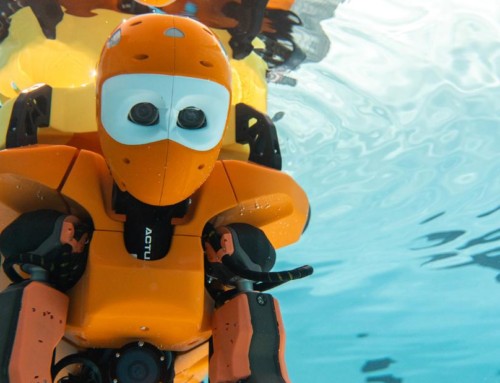[ad_1]
From Popular Mechanics
Engineers regularly swipe nature’s best designs for machines that humans can use. Animals are the result of thousands of years of evolution, generally giving them sleek and enviable designs. But in some cases, slower is better. That’s why a group of researchers has created the SlothBot, which mimics the efficiency of one of the laziest creatures alive, the sloth.
“In robotics, it seems we are always pushing for faster, more agile and more extreme robots,” says Magnus Egerstedt, an engineer at Georgia Institute of Technology and principal investigator for Slothbot, in a press statement. “But there are many applications where there is no need to be fast. You just have to be out there persistently over long periods of time, observing what’s going on.”
SlothBot is powered by two solar panels and is built to reside in the forest canopy continuously for months. Hanging on a tree branch, it would move only when necessary, to measure environmental changes like weather or chemical factors in the environment. A proof-of-concept build of the robot made its public debut at the International Conference on Robotics and Automation (ICRA) in Montreal, and there are plans to test it in the Atlanta Botanical Garden.
Graduate Research Assistant Gennaro Notomista designed SlothBot with his colleague, Yousef Emam. The two used 3D printing to create parts for the gearing and wire-switching mechanisms necessary for moving through a complex and tangled network of trees, or cables in practice scenarios. The biggest struggle for the SlothBot has been moving from one cable to another.
“The challenge is smoothly holding onto one wire while grabbing another,” says Notomista. “It’s a tricky maneuver and you have to do it right to provide a fail-safe transition. Making sure the switches work well over long periods of time is really the biggest challenge.”
A single SlothBot consists of two bodies connected by a hinge. Each body holds a driving motor, linked to a rim on which a tire is mounted. Using tires and wheels for movement allows the SlothBot to become even more energy efficient.
Understanding the sloth’s lifestyle was crucial for the engineers. To learn more about the animal’s mechanics, they recruited an outside sloth expert, Jonathan Pauli, an associate professor in the Department of Forest & Wildlife Ecology at the University of Wisconsin-Madison.
“The life of a sloth is pretty slow-moving and there’s not a lot of excitement on a day-to-day level,” says Pauli in the press statement. “The nice thing about a very slow life history is that you don’t really need a lot of energy input. You can have a long duration and persistence in a limited area with very little energy inputs over a long period of time.”
With funding from the U.S. Office of Naval Research, that’s what researchers hope the SlothBot will be doing soon. While there are many ways to monitor an environment, including flying drones, those methods can often take up lots of energy.
“The thing that costs energy more than anything else is movement,” Egerstedt says. “Moving is much more expensive than sensing or thinking. For environmental robots, you should only move when you absolutely have to. We had to think about what that would be like … Most of the time SlothBot will be just hanging out there, and every now and then it will move into a sunny spot to recharge the battery.”
Soon, Egerstedt hopes the robots will be meeting their real-world counterparts at a cacao plantation in Costa Rica, where real sloths live.
“The cables used to move cacao have become a sloth superhighway because the animals find them useful to move around,” Egerstedt said. “If all goes well, we will deploy SlothBots along the cables to monitor the sloths.”
For Pauli, the sloth researcher, the chance to share his knowledge was a welcome one.
“It is great to see a robot inspired by the biology of sloths,” he says. “It has been fun to share how sloths and other organisms that live in these ecosystems for long periods of time live their lives.”
Sloths now join hummingbirds, caterpillars, spiders, and a variety of fish as some of the animals that researchers are actively learning from. But unlike the others, a SlothBot sees the value in minimal movement.
(‘You Might Also Like’,)
[ad_2]
Source link





Leave A Comment
You must be logged in to post a comment.